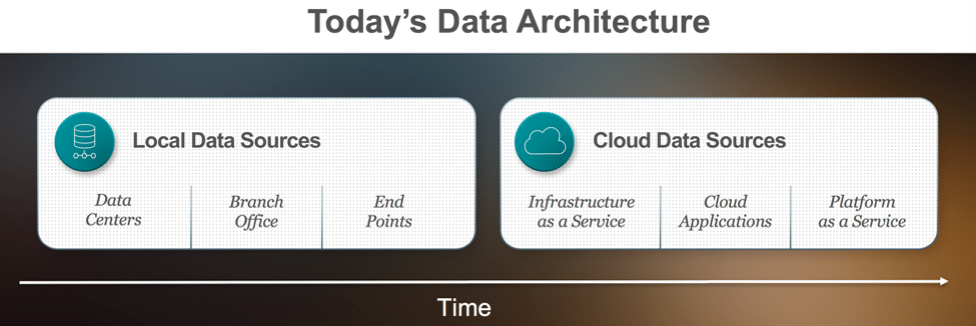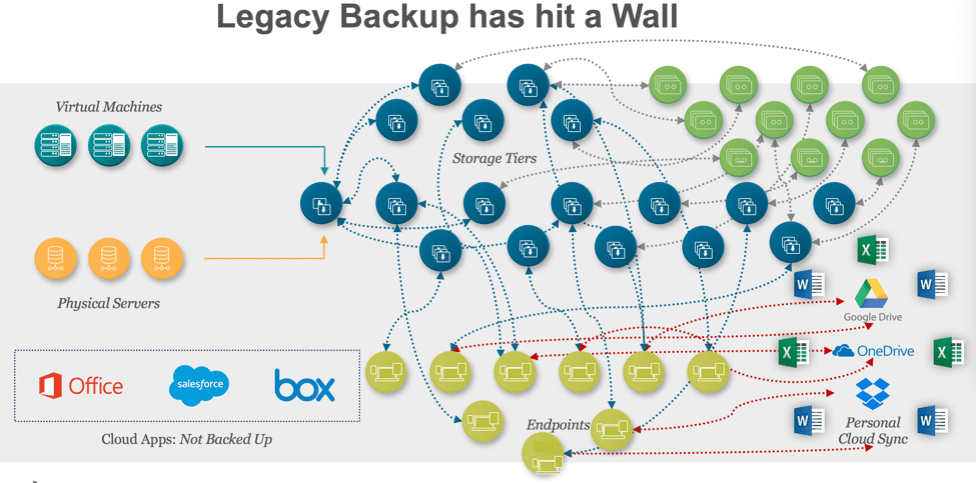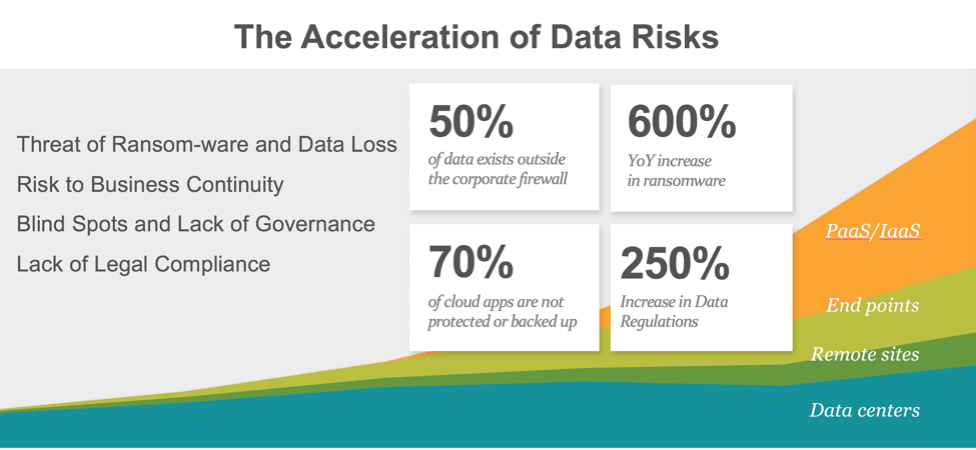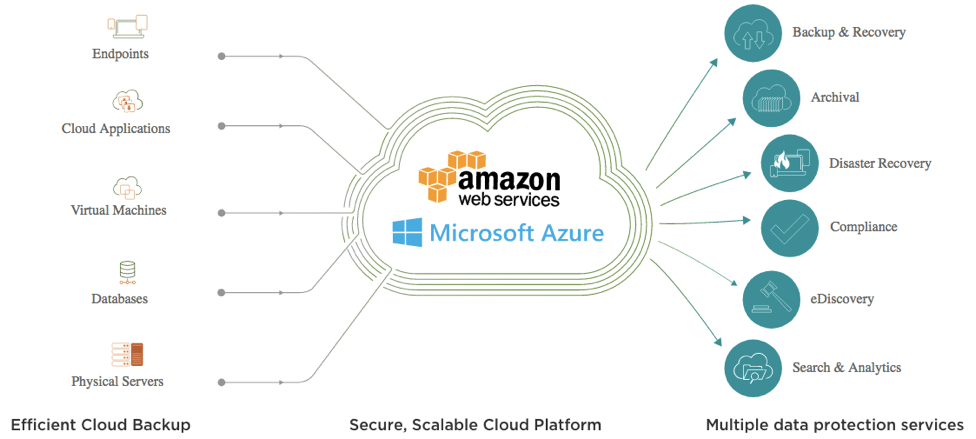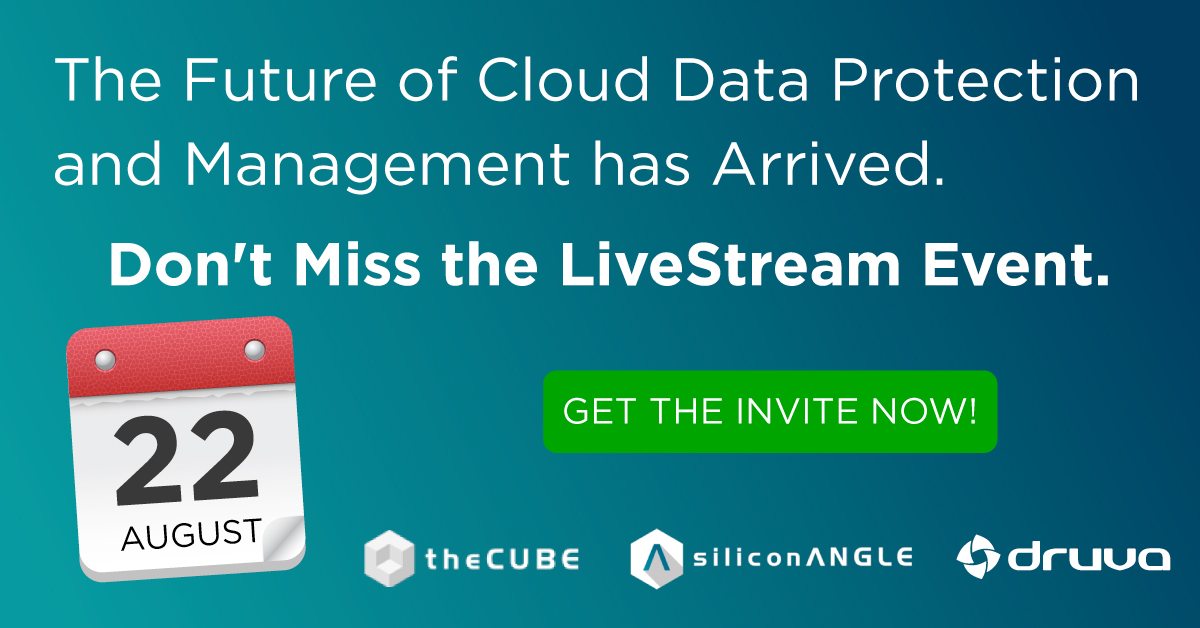DMaaS – A Simplified Approach
A DMaaS data protection model that is cloud-native and consumption-based dramatically eases the burden that organizations face when planning their digital transformation roadmaps. It can be a daunting task to navigate the complexity of managing and protecting multiple data sources as well as having to adhere to strict regulatory requirements and meeting the eDiscovery needs of the business. DMaaS provides central access and data visibility while mitigating the legal and regulatory risk, all within a cost-efficient pay-as-you-go pricing model that delivers a significant lower total cost of ownership (TCO). A DMaaS solution includes the following key benefits:
Assures Comprehensive Data Collection — A DMaaS platform reaches into all the places where enterprise data hides, from servers and desktops to tablets, smartphones, and cloud apps. This provides IT teams with the confidence that they are getting all the data.
Simplifies Backup and Recovery — Traditional backup systems can be slow, cumbersome, and expensive in terms of both the hardware and the administrative costs. Conversely, DMaaS stores a single, secondary copy of all data in the cloud infrastructure, making local backup hardware no longer necessary.
Works across Worldwide Locations — Because the cloud is independent of any physical location, your IT folks can restore server or desktop data from a hotel room halfway around the world just as easily as they can from a desk in the data center.
Ensures Compliance with Regulations — Relying on individual IT departments to manage information for complex and evolving compliance issues can put a company at risk of human error. The cloud system can be configured to monitor for certain types of legal and regulatory compliance issues and to send alerts whenever adjustments need to be made for standards like HIPAA or FedRAMP.
Makes eDiscovery Quicker and Easier — Digging up company information that’s relevant to a pending lawsuit can be a time‐consuming task when data is distributed across many storage locations. But with cloud information management, data is proactively collected, which makes the entire process quicker and easier.
Saves Money Compared to Other Options — Over a three-year period, cloud‐based information management can save the average company 65 percent in expenses, compared to traditional systems like hardware‐based backup devices and silo‐centric data analysis tools.
DMaaS Essential Elements
When you’re looking for a DMaaS platform for your organization, you should expect it to collect and consolidate raw and extended metadata from various sources (e.g., file servers, virtual machines, endpoints, and SaaS applications) and create a secondary, golden copy of this data in the cloud. The platform should have a highly optimized backup engine that collects raw and extended metadata and stores it completely deduplicated, removing the need for redundant backup copies.

